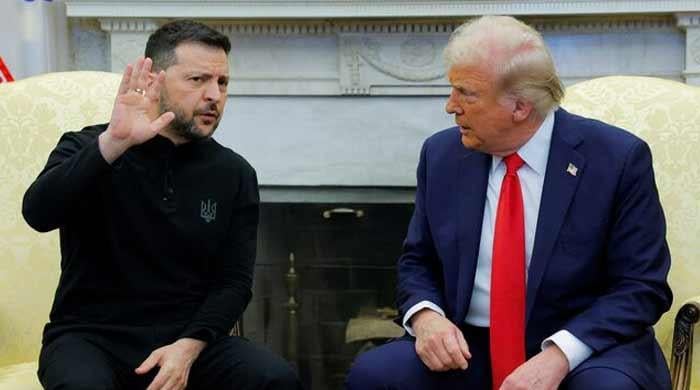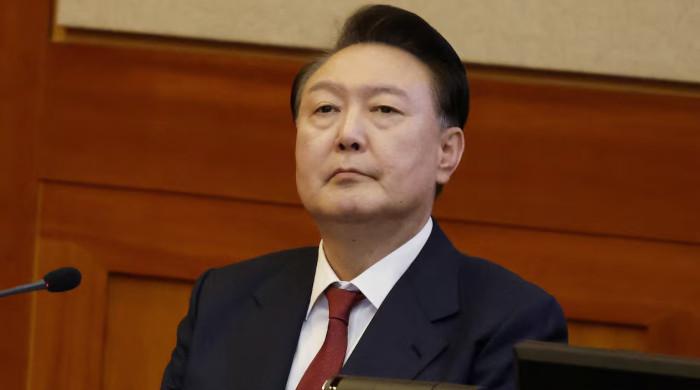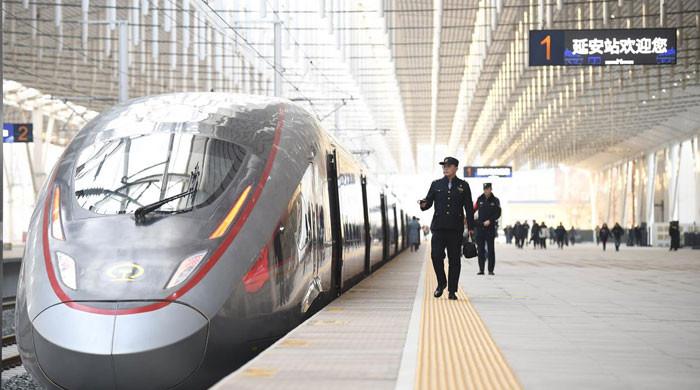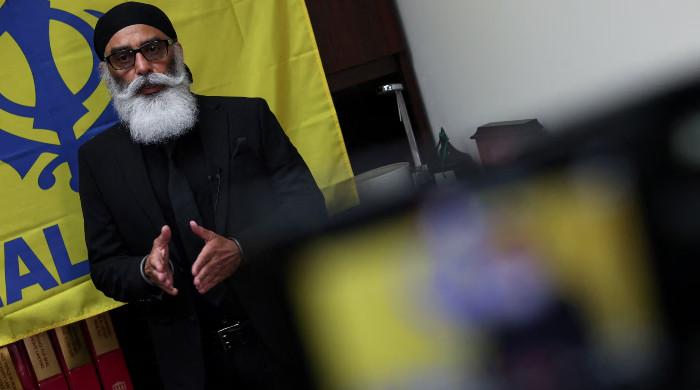Palestinian refugee uses balloon and camera to create aerial map
It is the first aerial map of a Palestinian refugee camp in Lebanon
February 19, 2017
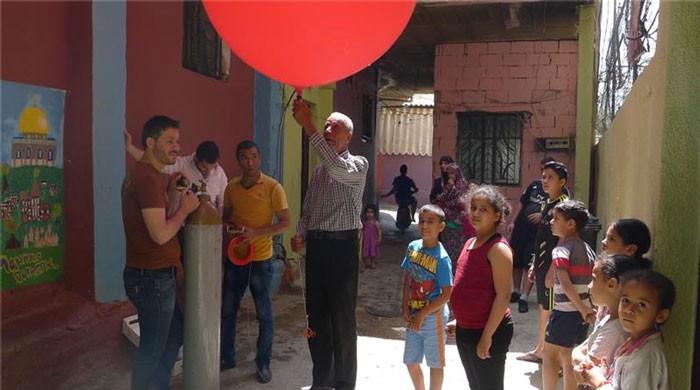
LEBANON: Equipped with an inexpensive camera and a big red balloon, Firas Ismail -- a 20-year-old Palestinian refugee in southern Lebanon -- is not your typical urban planner.
But the aerial shots he helped capture of the Burj al-Shamali refugee camp, near the Mediterranean coastal city of Tyre, will help residents plan out everything from future green spaces to health inspections.
"From below, you can´t really tell anything about the camp. But from above, you can see just how dense the buildings are and how little space there is," Ismail told AFP.
"It becomes clear there was no planning -- this map is the first time there´s a kind of urban planning for the camp," he said.
![null Participants watch from below as the red balloon sails above a spot in the camp [Courtesy of Greening Bourj al-Shamali]](https://www.geo.tv/assets/front/tiny_mce/source/1_12.jpg)
Participants watch from below as the red balloon sails above a spot in the camp [Courtesy of Greening Bourj al-Shamali]
The mapping project was born when residents of Burj al-Shamali, one of 12 Palestinian camps in Lebanon, wanted to create a local green space.
They enlisted help from Claudia Martinez, a humanitarian worker who has volunteered in the camp for years.
"I asked to see a map, but what they showed me was like a kid´s drawing," she told AFP.
"We decided we needed a new map... which could also be useful to deal with problems of electricity grid, fires, and doing health inspections of restaurants."
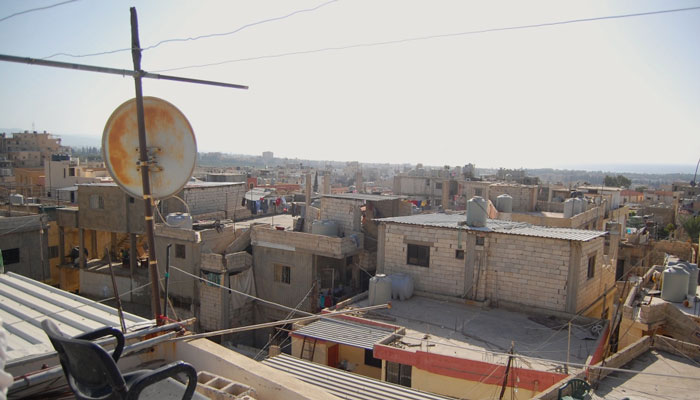
The view from the rooftop in Burj al-Shamali [Jillian Kestler-D'Amours/Al Jazeera]
Lebanon is home to around 450,000 Palestinian refugees registered with the UN, who live in cramped camps where infrastructure is dilapidated and services limited.
When it was established in 1948 to accommodate Palestinians who fled or were forced from their homes after the creation of Israel, Burj al-Shamali housed just 7,000 people.
But it is now home to nearly 23,000 residents and suffers from "extremely high" unemployment, according to the UN Relief and Works Agency for Palestine refugees.
Phone stores, falafel shops
With Martinez´s help, Burj al-Shamali´s residents raised more than $16,000 in crowd-funding last year to finance a community-led project to map their camp.
For days, Ismail and fellow volunteer Mustapha tied "one of those $60 Canon cameras" to a red helium balloon and flew it over different parts of Burj al-Shamali to take pictures.
The young mappers laugh when recounting the challenges of guiding the balloon through the camp´s chaotic maze of narrow alleyways.
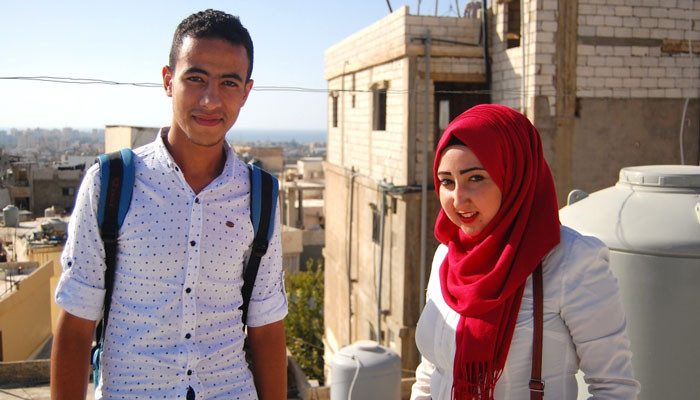
Mustapha Dakhloul, left, and Amal Said on a rooftop in Burj al-Shamali, one of the spots from which they flew a balloon over the camp [Jillian Kestler-D'Amours/Al Jazeera]
On one occasion, the balloon popped when they tried to squeeze it through a particularly narrow street. On another, celebratory gunfire from a nearby wedding shot their camera straight out of the air.
Stitching the images together, mappers saw their camp from above for the first time: a monochrome grid of concrete rooftops dotted with water tanks and satellite dishes, broken up occasionally by a row of trees.
To produce a real map, they printed large-scale copies of the composite image and invited camp residents to identify landmarks, but also annotate locations with relevant dates or associated memories.
In February, curious residents gathered at Al-Houla, the community group that has spearheaded the initiative, to contribute their expertise.
They pored over the bird´s eye pictures, trying to find their homes and taping neon pieces of paper identifying local landmarks like Abu Samer´s bakery, Najwa´s Nursery and the Old Mosque.
"People were writing that shops opened a certain year, NGOs were established in this year, this year electricity came to the camp. There´s a phone store here, a falafel restaurant there," Ismail said.
We can create
The annotated images have been sent to designers, who are working on finalising the map, which will then be printed and distributed to camp residents.
For Mahmoud Jumaa, who heads Al-Houla, the map will serve as "a message, carrying within its folds the concerns, problems and lifestyle of the camp."
Many residents had never used a map before, but now, "we can begin planning buildings -- planning the future."
Inspired by the densely packed concrete rooftops visible in the aerial images, Jumaa says there are already discussions about creating urban gardening projects and then a full-fledged park later this year.
"I was surprised that, despite the density, we can create," Jumaa, a lifelong camp resident, told AFP.
![null An aerial view over Burj al-Shamali camp taken with the balloon mapping technique [Courtesy of Greening Bourj al-Shamali]](https://www.geo.tv/assets/front/tiny_mce/source/4_13.jpg)
An aerial view over Burj al-Shamali camp taken with the balloon mapping technique [Courtesy of Greening Bourj al-Shamali]
"There is the possibility for innovation -- there is a positive image despite all the difficulties."
Organisers say the map may also help make Burj al-Shamali accessible to Lebanese citizens, whose impressions of Palestinian camps are often coloured by stereotypes of the areas as hotbeds of crime and extremism.
"There was a big interest (among residents) in building bridges with the Lebanese community, to say this place is not intimidating, you can move around," Martinez said.




